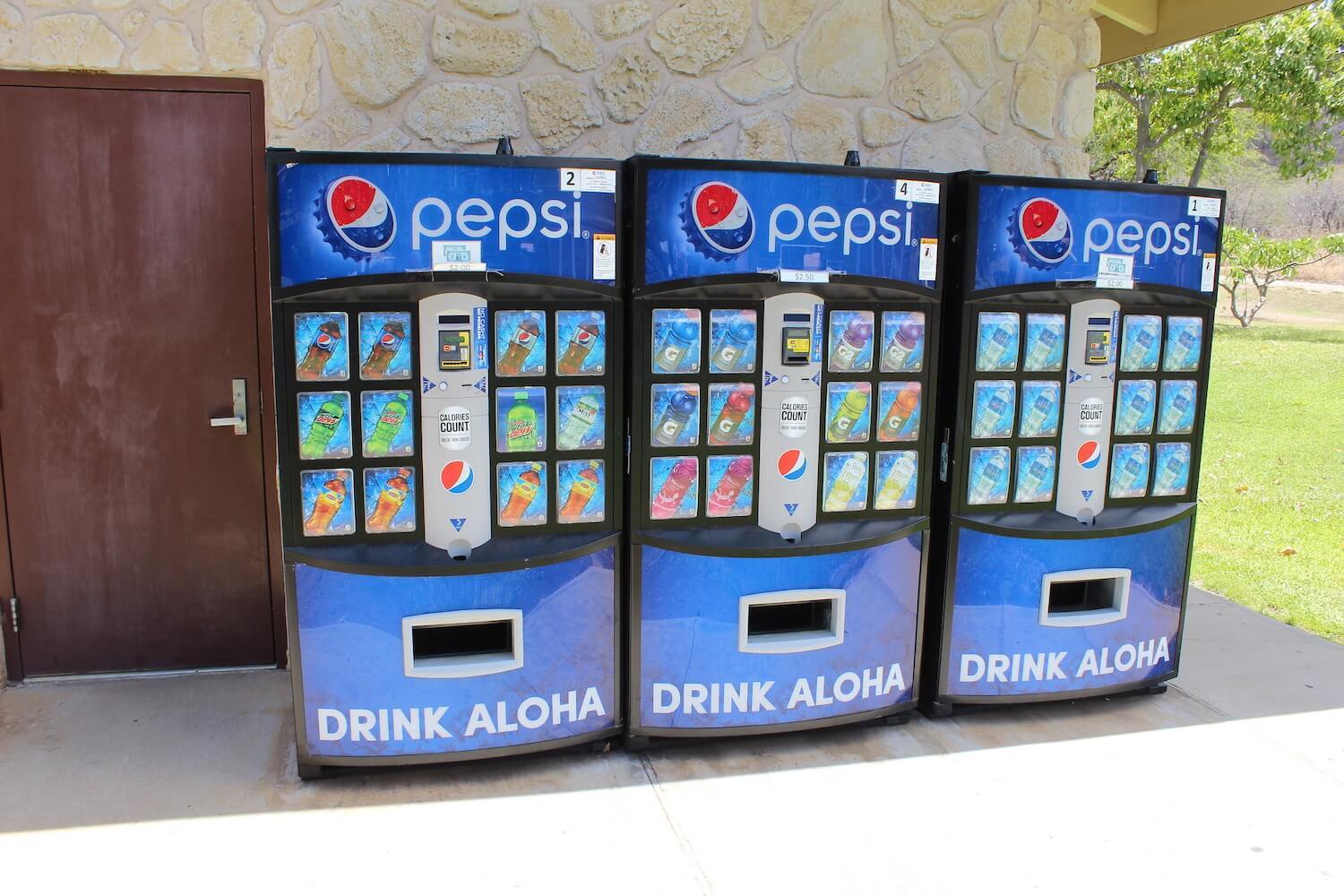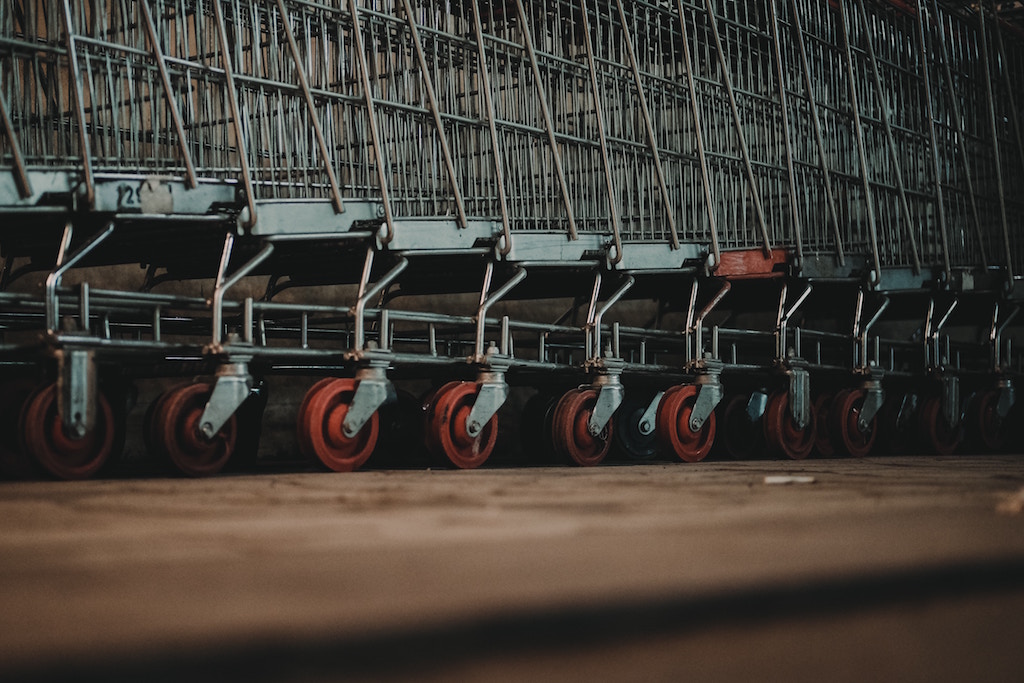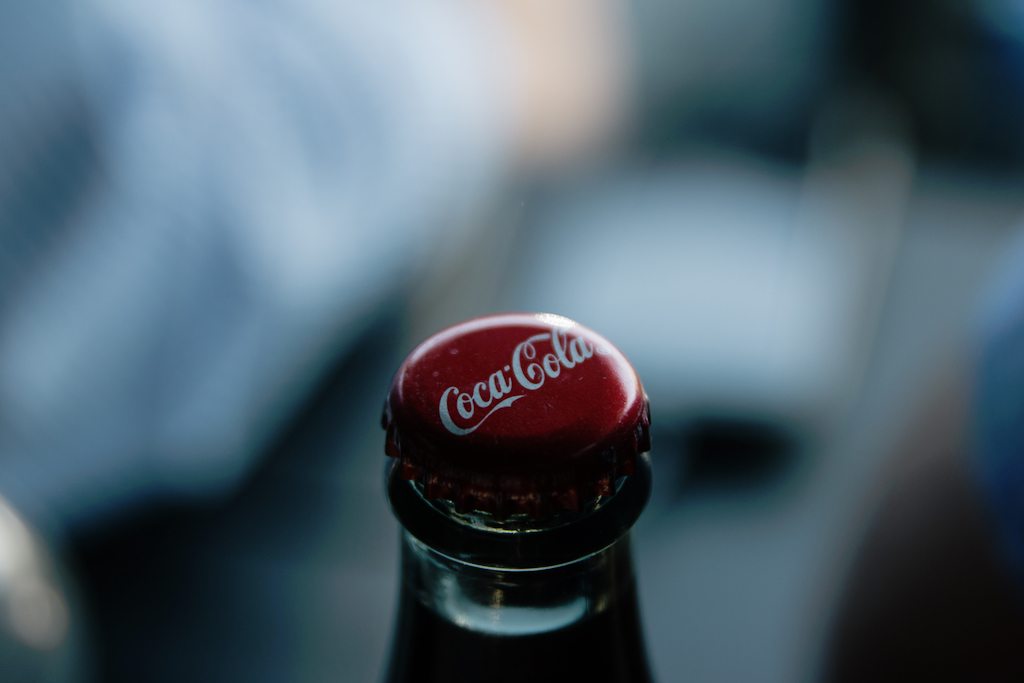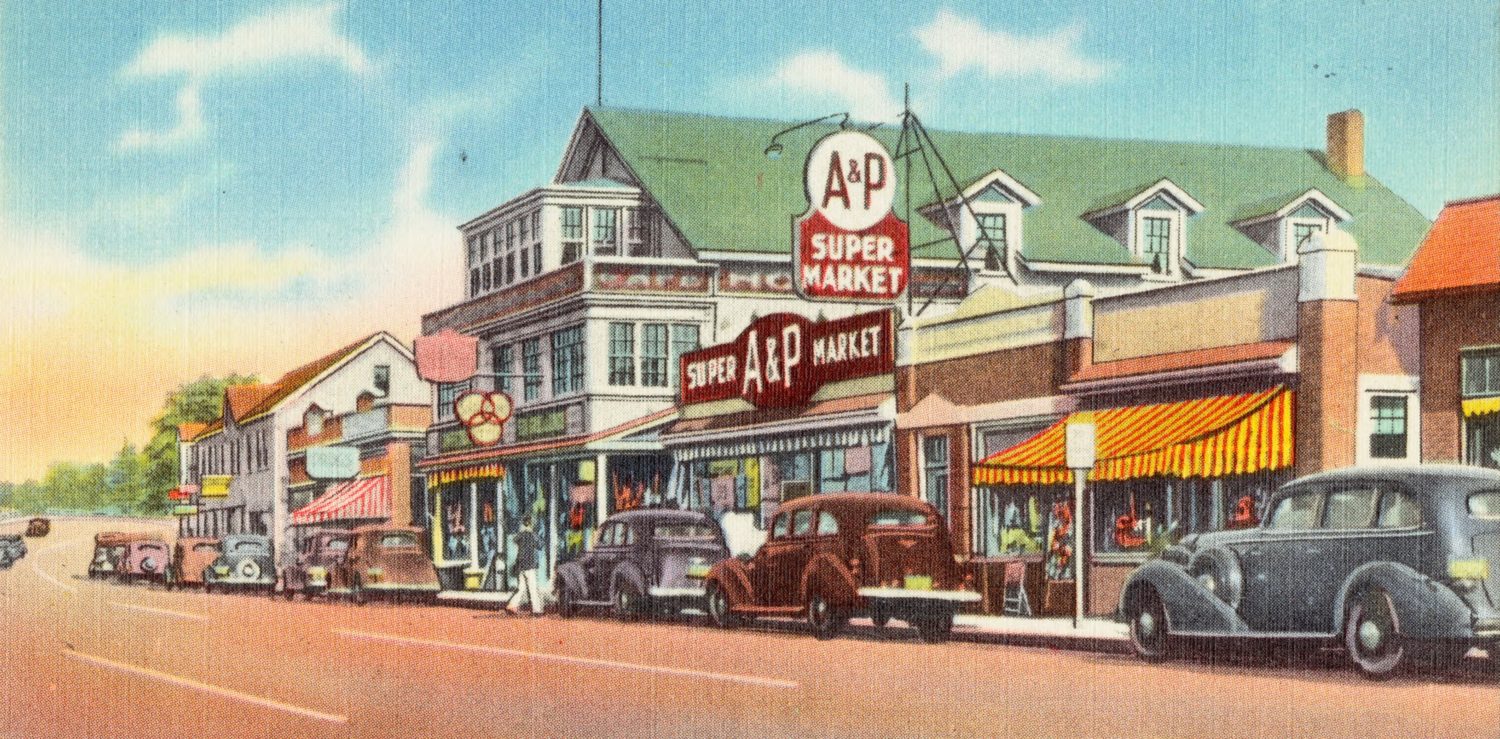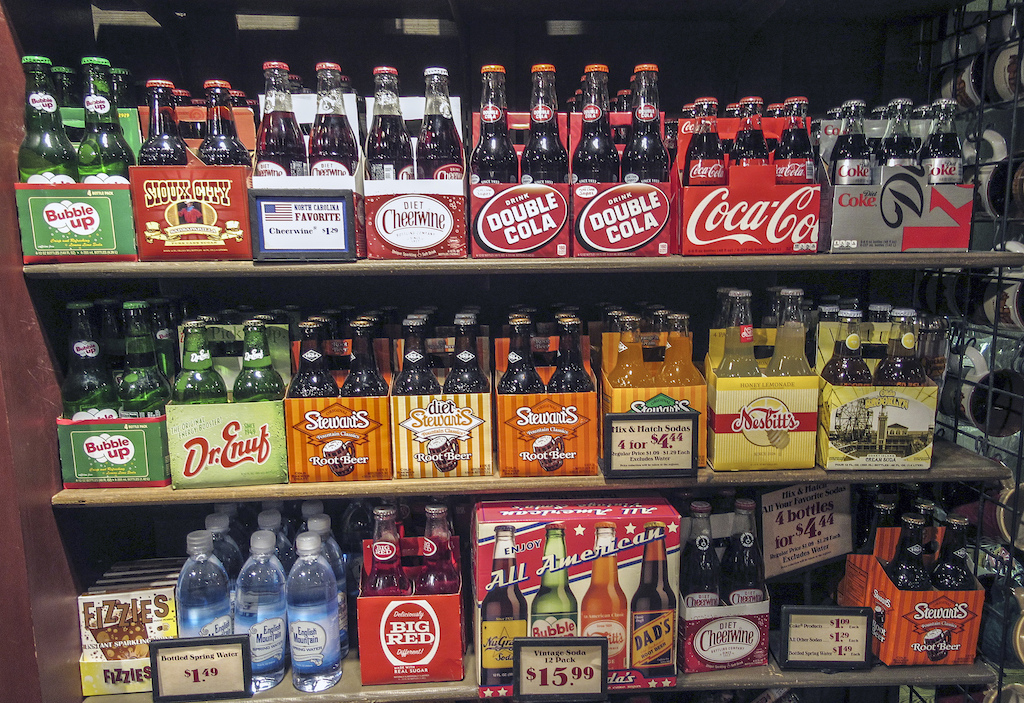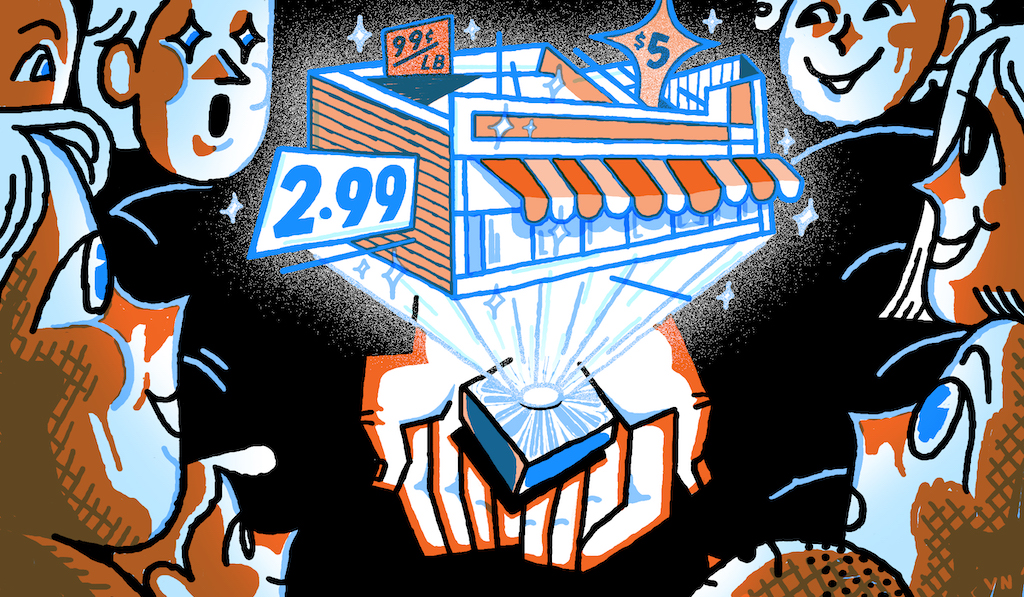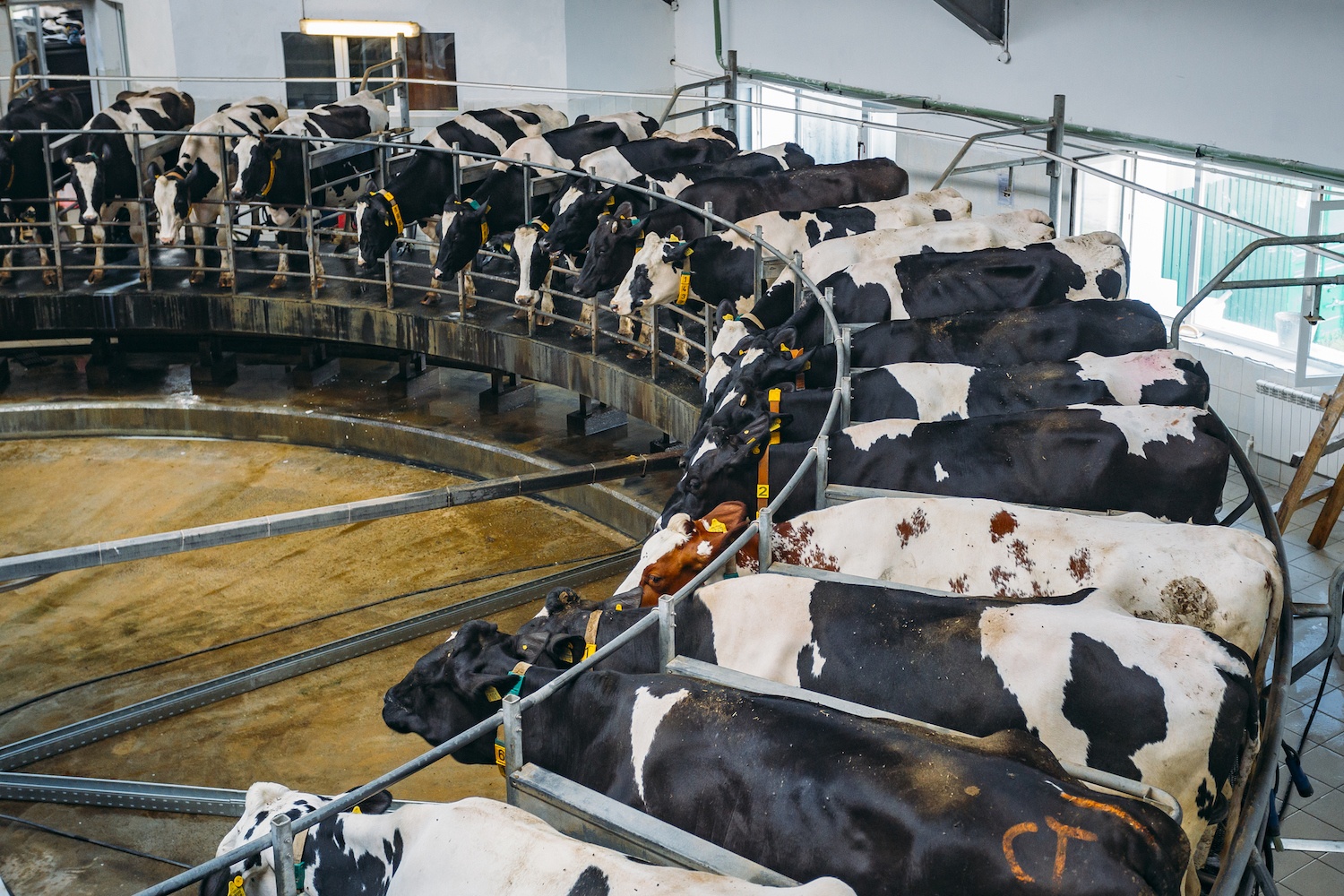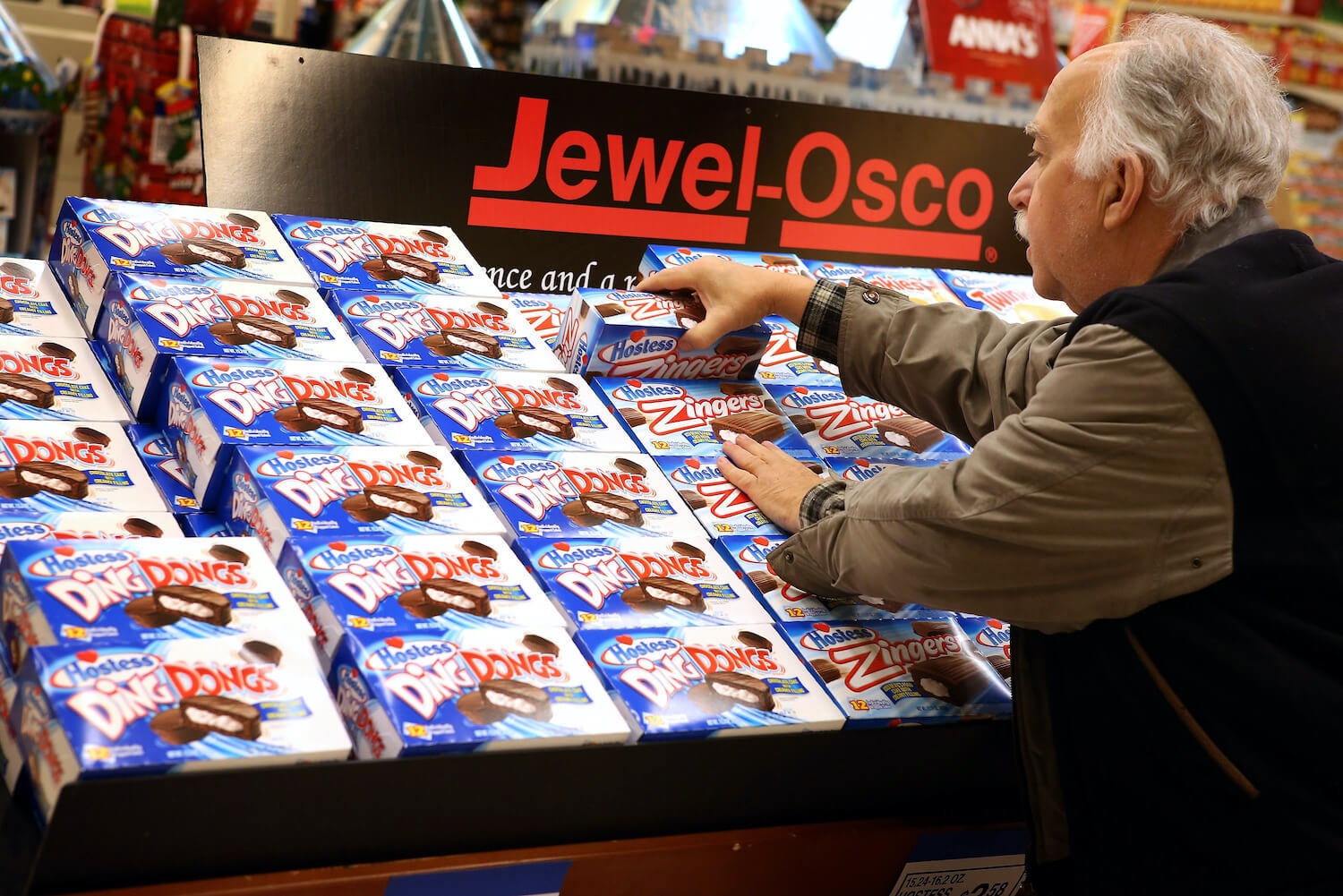
Scott Olson/Getty
Food manufacturers spend $50 billion a year to promote and place their products in supermarkets. A public interest group says those deals, known as “trade promotions,” are anticompetitive and bad for public health.
Why do so many American supermarkets look the same, with the same products, laid out in the same place, in the same kinds of displays? A public interest group says it’s because huge food and drink companies pay more than $50 billion a year to keep it that way.
Last week, the Center for Science in the Public Interest (CSPI), a D.C.-based consumer advocacy group, formally requested that the Federal Trade Commission (FTC) use its subpoena power to investigate “trade promotions.” That’s the industry name for the fees companies pay in order to design supermarket shelves and set up branded displays. The group claims the system drives up the cost of doing business in supermarkets, which disadvantages small manufacturers and upstart competitors.
But more than that, the group wrote in its February 19 letter, trade promotions undermine public health, because they give soda and snack companies the opportunity to dominate the supermarket. From the floating racks of cookies and cereals near the dairy case, to the Coke coolers and Frito-Lay end caps near the check-out aisle, shoppers must fight an “uphill battle every time they enter the store,” in order to avoid temptation.
“People assume that the grocery store is probably the premier example of the free marketplace at work, when in fact it’s anything but,” said Laura MacCleery, the group’s policy director. “It’s a rigged system, set up to maximize profits for the biggest players in the food industry, who make a large degree of their money by creating cheap, unhealthy and caloric foods, and by expanding the shelf space, and crowding out the competition.”
“People assume that the grocery store is probably the premier example of the free marketplace at work, when in fact it’s anything but.”
Trade promotions are usually arranged through cooperative marketing agreements, or “trade spends.” Those are contracts that specify how a retailer will promote, place, and price a manufacturer’s product, in exchange for fees.
The best placement in a grocery store is the checkout aisle, where shoppers are likely to make impulse buys. There, a manufacturer can expect to pay a large chain as much $1 million a year to put a single product on the shelf, according to a 2016 report.
[Subscribe to our 2x-weekly newsletter and never miss a story.]
Then there’s the end caps, or end-of-aisle shelves that one consultant described as “the powerhouses of any store.” New food manufacturers want their turn on those displays—which also face customers waiting in line—but few of them can afford it. At a large supermarket chain, a few weeks on an endcap, or on free-standing cardboard racks known as “shippers,” can cost over $50,000.
All that, in addition to the hefty “slotting fees” just to get a product into the store in the first place, which can run anywhere from $8,000 or $9,000 at a single local market, to as high as $3 million for national rollout at a major chain.
At a large supermarket chain, a few weeks on an endcap, or on free-standing cardboard racks known as “shippers,” can cost over $50,000.
CSPI said these prices make the store’s premium real estate off-limits to all but the largest manufacturers—companies that sell unhealthy foods, like salty snacks, soft drinks, and sugary cereals.
Some corporate chains go further, and designate leading manufacturers their “category captains,” said Gregory Gundlach, a marketing professor at the University of North Florida. As captains, those brands are in charge of drawing up shelf arrangements, promotion schedules, and even setting prices for their competitors’ products. Those “planograms” are typically sent down to store managers from corporate offices, Gundlach said.
“It’s bad stuff,” said Gundlach. “It gets to the heart of anticompetitive conduct, and gets to the heart of antitrust laws, which is that prices are higher than they otherwise would be, because of the mischief or misconduct of the category captain.”
But because those antitrust laws are rarely enforced, those issues have to be settled in court, Gundlach said. Over the last two decades, several companies have sued the category captains, alleging everything from using their marketing plans to release rival products, to instructing stores to physically remove products from racks.
“Who decides who gets carried in the online app? Who decides who gets the first line, the second line, or who comes up first when a consumer is looking for suggested products?
In 2013, for example, Jon Gordon, the founder of Clemmy’s, a sugar-free ice cream company, sued Nestlé, the category captain for “frozen desserts” in 22 of the country’s largest supermarket chains. Gordon alleged the company relegated his products to the lowest shelves in the freezer case, which hurt sales. Moreover, he claimed Kroger was on the verge of stocking his ice creams in 2,400 stores, until the ice cream giant intervened. (The case was dismissed by a California judge.)
The FTC last investigated trade promotions in 2003, long before the rise of online grocery shopping. In its letter, CSPI wrote that the same pay-to-play schemes could spread there, “with prime placement on shelves replaced by premium placements in search results and targeted marketing.” For that reason, it’s asking FTC to obtain more information about “the acquisition, sale, and use of consumer data, and its impact on trade promotion, category management, or other decisions” made by retailers in the online space.
As an example, the group points out that Hershey encourages “retailers to include a host of digital promotions on the checkout page,” with a “just add Hershey’s” button that gives shoppers free shipping. The group worries that more companies could follow this model, and use sophisticated data scraping and targeting marketing to turn more impulse purchases into planned ones, as a Hershey executive said.
“Who decides who gets carried in the online app? Who decides who gets the first line, the second line, or who comes up first when a consumer is looking for suggested products?” Gundlach said. “There is the potential for anti-competitive conduct.”

